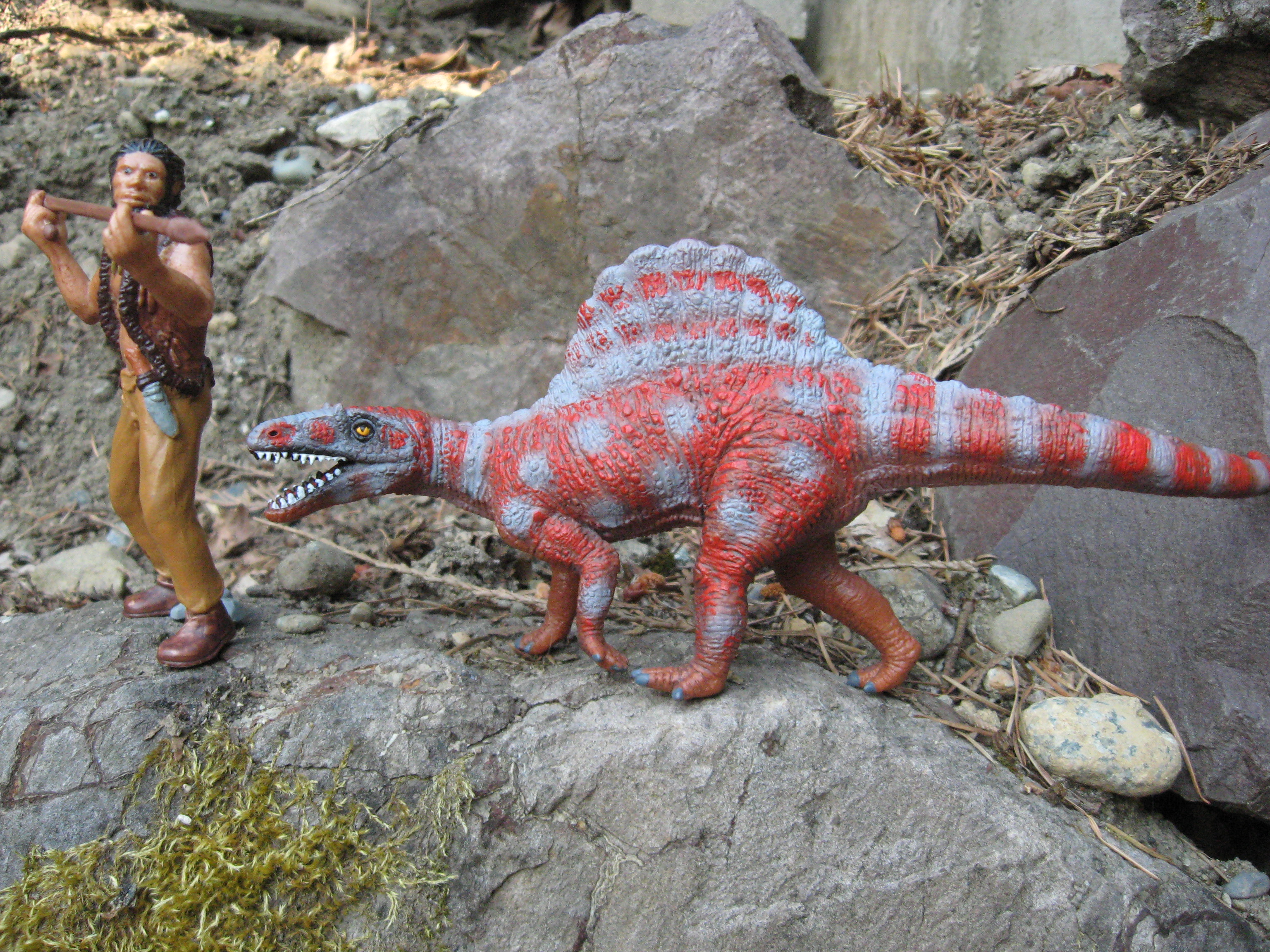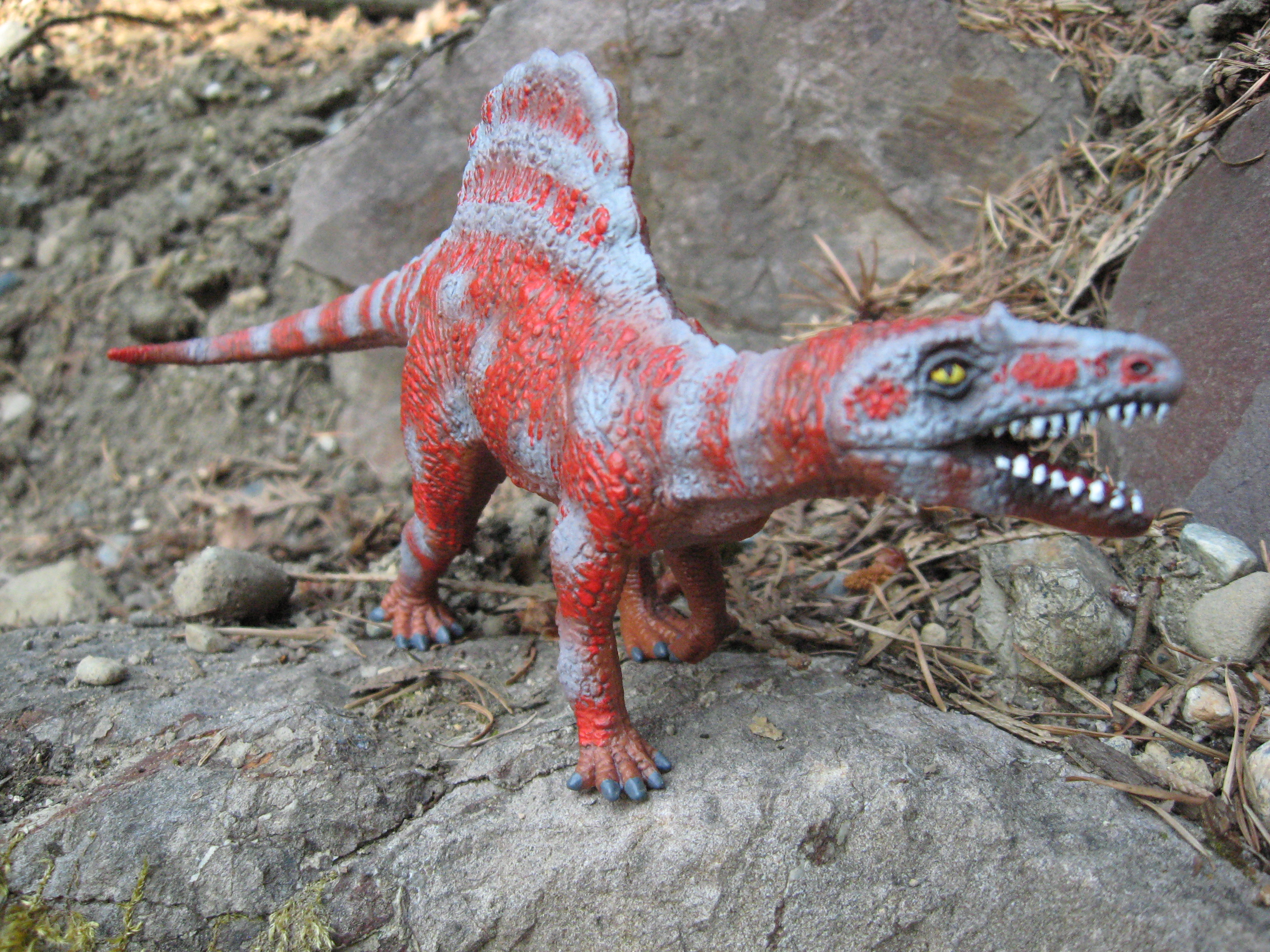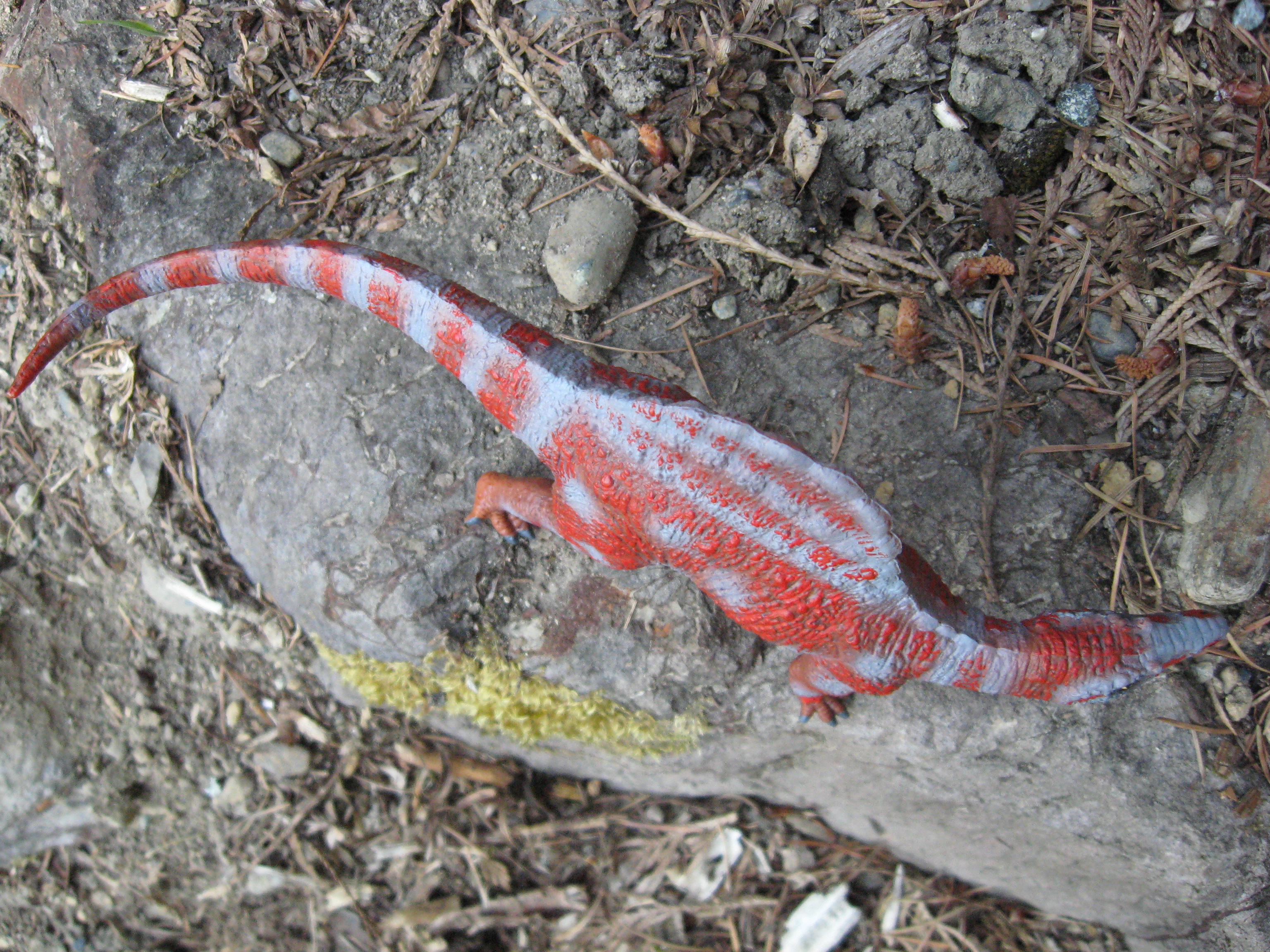Arizonasaurus was a 12 foot long, predatory, long legged Rauisuchian related to modern crocodilians, and it was a top predator in the lower Triassic ecosystem of yep, you guessed it, Arizona roughly 240 million years ago. The name translates simply to “Arizona reptile”. Although to a layperson Arizonsaurus and other Rauisuchians may resemble dinosaurs, they were not. In fact, Arizonasaurus lived before the first dinosaurs had even evolved, though later Rauisuchians would coexist with early dinosaurs for millions of years. Arizonasaurus exhibited a large sail on its back formed from the elongated neural spines of its vertebrae, similar to the older, unrelated Early Permian pelycosaur Dimetrodon. The function of sails like these in fossil saurians has been the subject of much debate, with theories ranging from thermoregulation, to brightly colored mating displays, or just simply to make the animal appear larger. The genus Arizonasaurus was established by paleontologist Samuel P. Welles in 1947 and a mostly complete skeleton was recovered by Sterling Nesbitt in 2002. The figure is mostly based on this 2002 specimen.

In 2007 the German company Bullyland introduced several figures representing obscure Triassic genera to its World of Dinosaurs museum line, including the Arizonasaurus, which is the only the figure of its kind. It almost seems as if these were released to promote the displays in Germany’s Stuttgart Museum because the poses of the figures are nearly identical to those of their life-size counterparts in the museum. The Arizonasaurus is even the same exact color. The figure is about 8.5 inches long and 3.5 inches tall at the top of its sail. It is scaled at 1:20 (so is the human, for a relative size comparison) along with Bullyland’s Triassic Batrachotomus and Paratypothorax figures. The skin is scaly, wrinkly, and just well detailed all around. The figure is molded in a plastic much more rubbery than is used by most manufacturers, but it’s solid. The paint scheme is quite fantastic and like I said, it matches the Arizonasaurus in the Stuttgart Museum. It is predominantly bright red on its sail and sides, with three horizontal blue-gray stripes wrapping around the sail, gray spots on its sides and limbs, a gray banded tail, and gray markings on the skull. There is a single row of scutes along the neck, top of the sail, and down to the tip of its tail. The belly and inside of the limbs are a rusty brown color with tan, the teeth are painted white on their outer sides only, there is a bright red tongue in the mouth, and the eyes are yellow with black slit pupils. The claws are painted dark gray. It seems to be in a walking pose with the left forelimb raised.

This model is another fantastic entry by Bullyland, with very few anatomical errors. The feet are particularly good, with the 5th outermost digit of each “paw” curved outwards as it should be. The skull is also highly detailed and almost resembles that of an early theropod dinosaur, although theropods are unrelated to animals like Arizonasaurus and it is merely the result of convergent evolution. Large theropod dinosaurs occupied the same ecological niche as the Rauisuchians had before them. While overall I’d say this is a great figure, there are a few problems. The body of the animal is too short; there should be more distance between the hind and forelimbs. This almost makes the figure look too chunky, but it isn’t a huge problem. The legs are noticeably a bit chunky. The skull is also a bit misshapen, with the snout tapering to too much of a point, the maxillae not being deep enough in places, and the teeth, while not bad looking, are rather generic in shape and size.

This is a great model and it has a very unique and eye-catching color pattern. It definitely didn’t disappoint when it arrived in the mail. It’s still in production and is relatively easy to find online. Rauisuchian fans, this one’s for you!
Disclaimer: links to Ebay and Amazon on the DinoToyBlog are affiliate links, so we make a small commission if you use them. Thanks for supporting us!




There should be more Arizonasaurus Figures!
A great model, despite the aforementioned lousy detailing that Bullyland suffers from! I only wish I knew how to get a copy
Simply put: It was a Apex Predator. Once it was an adult, its main enemy was probably competition from other Arizonasaurus. As a Baby or Juvenile I am sure a many other animals such as Phytosaurus would have them on the menu.
How did the Arizonasaurus protect itself?
A more apt question would be ‘how did other animals protect themselves from Arizonasaurus’. Arizonasaurus is a large predator with sharp teeth and claws.
My daughter has to write a paragraph describing this animal and it’s enemies. Why am I not seeing anything about enemies?
Because it is a toy review!
I’m not even sure if it had enemies!
[…] Bullyland had already released two species of Raiusuchians: Batrachotomus (reviewed here) and Arizonasaurus (reviewed here. Both were unusual species choices and overall really well done, if it had not been for the goofy […]
You can see some photos of the original model which I made at Stuttgart:
http://bestiarium.kryptozoologie.net/artikel/arizonasaurus-das-scheinkrokodil-mit-dem-ruckenbuckel/
I especially like it, that they sculpted the dorsal spines covered with muscles, and not only with skin. There were several extinct animals which possesed highly elongated dorsal spines, but they are often compared in a very bad way. Dimetrodon is nearly always mentioned, as well as Edaphosaurus. But if you look at their skeletons, you can see that their spines are completely different from those of animals like Spinosaurus or Ouranosaurus. They were very very thin compared to their length, round in diamter, and it is very probable that they were only covered with skin, like the dorsal spines of modern basiliscs. In contrast the dorsal spines of Spinosaurus, Ouranosaurus as well as Arizonasaurus were not only shorter in proportion, but also much longer than wide in diametre, and much more stabile than those of Dimetrodon. In the whole they were nothing much more than elongated dorsal spines, which are normally anchors for muscles and sinews. I don´t think they had a massive hump on the back, but they way in which the narrow hump is sculpted in Arizonasaurus seems very probable to me.
Well, now I have to buy this. Arizonasaurus is one of my favorite crurotarsians–Scott Elyard and I even restored it for an art show last year!